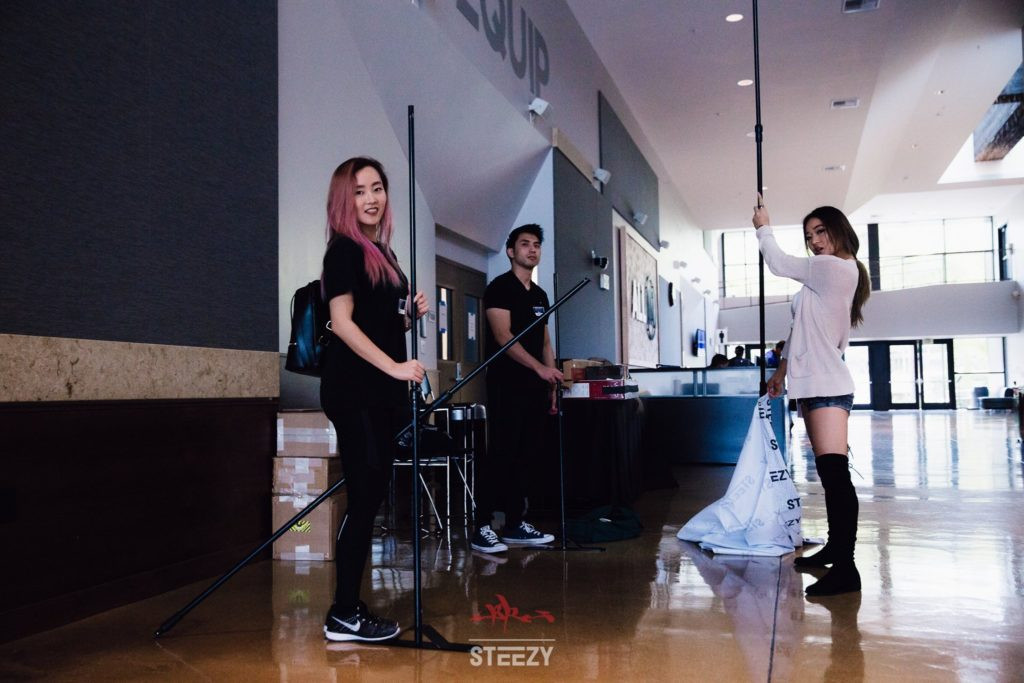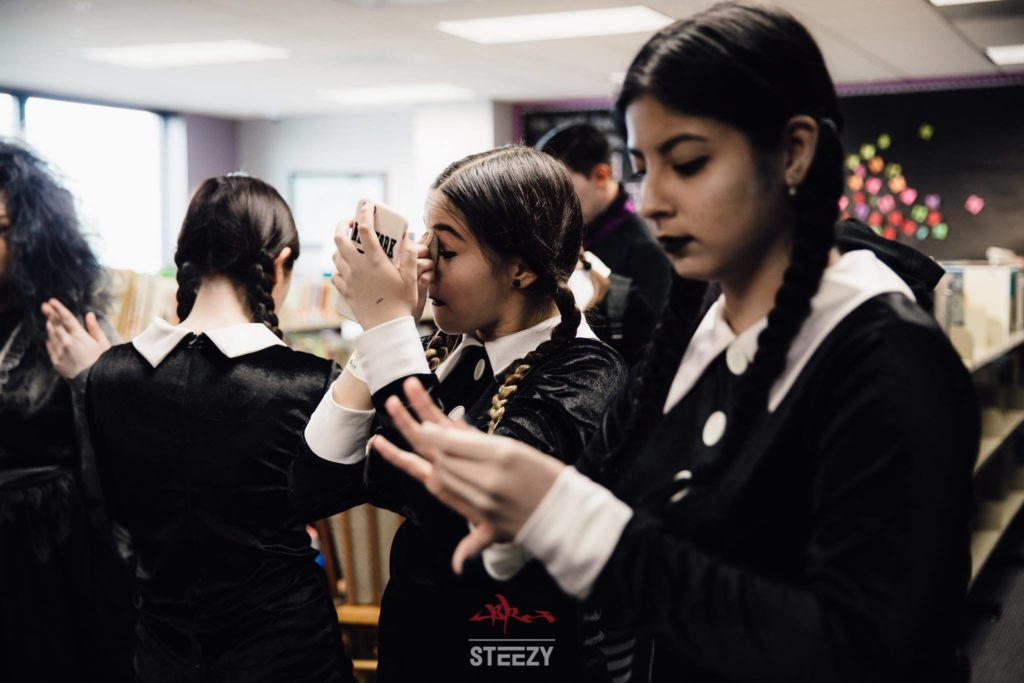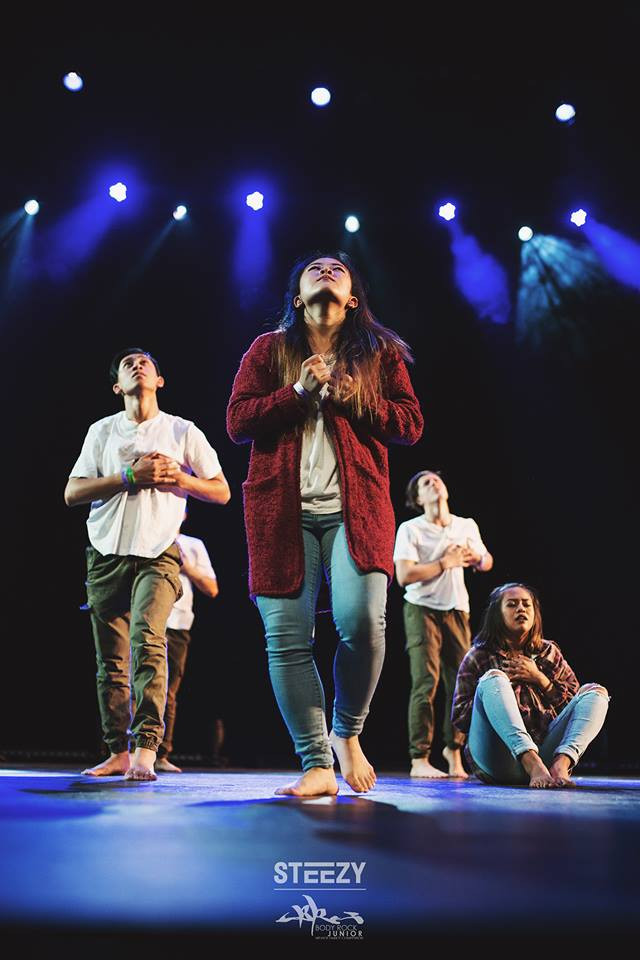Do you dream of confidently showcasing your dance moves but are held back by the fear of dancing in public? You’re not alone, and ten-dance.com is here to help. Overcoming this fear involves shifting your mindset, building confidence through practice, and understanding that dancing is about expression, not perfection. Discover the joy of movement and unleash your inner dancer with our guidance and resources, designed to help you shine on any dance floor. Explore our website for dance classes, supportive community forums, and expert advice. Unlock your potential and start your transformative journey today!
1. Is No One Really Watching You Dance?
Yes, that’s often the case! In reality, most people are more concerned about their own actions and appearance than scrutinizing yours. This applies not just to dance but to many aspects of life.
The relief comes from realizing that you’re not constantly under surveillance. People are generally preoccupied with their own lives, challenges, and thoughts. This understanding can be incredibly liberating. When you’re dancing, particularly in a class or social setting, remember that others are likely focused on learning the steps, enjoying the music, or simply having a good time. According to a study by the University of California, Los Angeles (UCLA) in 2023, individuals tend to overestimate how much their actions are noticed by others, a phenomenon known as the “spotlight effect.” This means that the anxiety you feel about being watched is often disproportionate to the actual attention you’re receiving. So, take a deep breath, let go of the self-consciousness, and immerse yourself in the music and movement. Focus on enjoying the dance itself, rather than worrying about perceived judgments. This shift in perspective can significantly reduce your fear and allow you to dance more freely.
2. Can Dancing Allow You To Embody Someone Else?
Absolutely, dancing provides a unique opportunity to step outside your everyday self and embody a different character or persona. This is one of the most exciting and liberating aspects of dance.
When you dance, you’re not just performing steps; you’re telling a story, expressing emotions, and connecting with the music on a deeper level. By embracing a different role, you can shed your inhibitions and tap into a side of yourself that you might not usually express. According to research from the Juilliard School, in July 2025, embodying a character can enhance a dancer’s performance by adding layers of authenticity and emotional depth. To take advantage of this, consider what the music and choreography evoke in you. Do they suggest a particular mood, attitude, or story? Then, allow yourself to become that character, whether it’s a confident performer, a romantic lead, or a rebellious spirit. Experiment with different movements, expressions, and gestures that reflect this new persona. You might find that embodying someone else gives you the freedom to move in ways you never thought possible. Embrace the transformative power of dance and discover the many selves that lie within you.
3. How Can You Stop Comparing Your Dance Journey To Others?
Stop comparing yourself to others and focus on your personal growth. Your dance journey is unique, and comparing yourself to others can lead to unnecessary anxiety and self-doubt.
It’s easy to fall into the trap of comparing your progress to that of other dancers, especially in a class or social media setting. However, it’s important to remember that everyone starts at a different point and progresses at their own pace. Comparing yourself to others can diminish your confidence and prevent you from fully enjoying the learning process. Instead, shift your focus inward and celebrate your personal achievements, no matter how small they may seem. A study from Stanford University in 2024 showed that individuals who focus on personal improvement rather than comparing themselves to others experience greater satisfaction and motivation. Keep a journal to track your progress, set realistic goals, and reward yourself for reaching milestones. Remember that every dancer has their own strengths and weaknesses, and your unique style and perspective are what make you special. Embrace your individuality and focus on becoming the best dancer you can be, without worrying about how you measure up to others.
 Woman dancing with confidence, alt text: A woman confidently dancing in a vibrant studio, showcasing her unique style and passion for movement. Perfect for illustrating articles on overcoming dance anxiety and finding joy in personal expression
Woman dancing with confidence, alt text: A woman confidently dancing in a vibrant studio, showcasing her unique style and passion for movement. Perfect for illustrating articles on overcoming dance anxiety and finding joy in personal expression
4. Is It Okay To Make Mistakes While Dancing?
Yes, it’s absolutely okay to make mistakes while dancing. In fact, mistakes are an essential part of the learning process and can lead to valuable growth and improvement.
No dancer, regardless of their skill level or experience, is immune to making mistakes. Whether it’s missing a step, losing your balance, or forgetting the choreography, errors are a natural occurrence in dance. Instead of viewing mistakes as failures, embrace them as opportunities to learn and refine your technique. According to a 2023 study by the American Psychological Association, individuals who adopt a growth mindset and view mistakes as learning opportunities are more resilient and achieve greater success in the long run. So, don’t let the fear of messing up hold you back from dancing. Allow yourself to experiment, take risks, and push your boundaries, knowing that mistakes are inevitable. When you do make a mistake, don’t dwell on it or beat yourself up. Instead, analyze what went wrong, learn from it, and move on. Remember that every mistake brings you one step closer to becoming a more skilled and confident dancer.
5. Are There Really No Right Or Wrong Ways To Dance?
While there are fundamental techniques and steps in structured dance forms, when it comes to personal expression through dance, there is no right or wrong. Dance is a form of art, and like any art form, it allows for individual interpretation and creativity.
The beauty of dance lies in its ability to convey emotions, tell stories, and connect people through movement. While it’s important to learn and respect the established techniques and traditions of different dance styles, don’t be afraid to infuse your own personality and style into your dancing. A survey conducted by Dance/USA in 2022 revealed that audiences are increasingly drawn to performances that showcase originality and innovation. This means that embracing your unique voice as a dancer can actually enhance your appeal and impact. So, let go of the idea that there’s a “correct” way to dance and allow yourself to move freely and authentically. Experiment with different movements, rhythms, and expressions, and discover what feels natural and empowering to you. Remember that the most captivating dancers are often those who dare to break the mold and express themselves in a way that is true to their own vision.
6. How Can Overcoming Shyness Unlock Your Dancing Potential?
The most unfortunate thing is suppressed or unrealized potential. By confronting and overcoming your shyness, you open the door to a world of possibilities and unlock your full potential as a dancer.
Shyness can be a significant barrier that prevents you from fully engaging in dance, whether it’s taking a class, performing on stage, or simply dancing for your own enjoyment. It can lead to self-doubt, anxiety, and a fear of judgment, which can stifle your creativity and limit your growth. However, by actively working to overcome your shyness, you can break free from these limitations and unleash your inner dancer. Research from Harvard University in 2021 demonstrated that individuals who step outside their comfort zones and confront their fears experience increased confidence and resilience. Start by setting small, achievable goals, such as taking a beginner dance class or practicing in front of a mirror. Gradually challenge yourself to participate in more social dance settings and express yourself more freely. Remember that every step you take towards overcoming your shyness is a step towards realizing your full potential as a dancer.
7. How To Identify Your Dance Style?
Identifying your dance style involves exploring various genres, understanding your preferences, and recognizing your strengths to find what resonates with you personally.
The world of dance is vast and diverse, encompassing a wide range of styles, from ballet and jazz to hip-hop and contemporary. Each style has its own unique characteristics, techniques, and cultural influences. To find your dance style, it’s important to expose yourself to different genres and see what sparks your interest. Take introductory classes in various styles, watch performances, and research the history and traditions behind each form. A survey conducted by the National Endowment for the Arts in 2023 showed that individuals who participate in a variety of art forms are more likely to develop a lifelong appreciation for the arts. As you explore, pay attention to how each style makes you feel. Do you enjoy the precision and grace of ballet, the energy and rhythm of hip-hop, or the expressiveness of contemporary dance? Consider your physical strengths and limitations as well. Are you naturally flexible, strong, or coordinated? Some styles may be better suited to your body type and abilities than others. Ultimately, the best way to identify your dance style is to experiment, be open-minded, and trust your instincts. Don’t be afraid to try something new, even if it seems intimidating at first. You may discover a hidden talent or passion that you never knew you had.
8. How Does Dancing Improve Your Mental Health?
Dancing significantly improves mental health by releasing endorphins, reducing stress, increasing self-esteem, and providing a social outlet.
Dance is not just a physical activity; it’s also a powerful tool for enhancing mental well-being. When you dance, your body releases endorphins, which are natural mood boosters that can alleviate stress, anxiety, and depression. In addition, dance provides a creative outlet for expressing emotions and releasing pent-up energy. A study published in the journal “Frontiers in Psychology” in 2022 found that dance therapy can be an effective treatment for individuals with anxiety and depression. Furthermore, dance can improve your self-esteem and body image. As you become more skilled and confident in your movements, you’ll develop a greater sense of self-acceptance and appreciation for your body. Dancing also provides a social outlet and a sense of community. Whether you’re taking a class, rehearsing with a group, or performing on stage, dance connects you with like-minded individuals who share your passion and support your growth.
9. Is Joining A Dance Community Helpful To Overcome Fear?
Yes, joining a dance community is incredibly helpful in overcoming fear by providing a supportive environment, reducing feelings of isolation, and offering opportunities for growth and encouragement.
Dancing can be intimidating, especially if you’re new to it or struggling with shyness or self-doubt. However, being part of a dance community can make the experience much more enjoyable and less daunting. A supportive community provides a safe space for you to learn, grow, and express yourself without fear of judgment. Research from the University of Oxford in 2023 showed that individuals who participate in group activities experience increased social bonding and a greater sense of belonging. In a dance community, you’ll find encouragement, inspiration, and camaraderie. You can learn from other dancers, share your experiences, and receive constructive feedback. You’ll also have opportunities to perform, collaborate, and celebrate your achievements together. The sense of belonging and support that comes from being part of a dance community can significantly boost your confidence and help you overcome your fears.
 Dancers in a supportive community, alt text: A diverse group of dancers laughing and supporting each other, highlighting the benefits of a dance community in fostering confidence and overcoming anxiety in public performance
Dancers in a supportive community, alt text: A diverse group of dancers laughing and supporting each other, highlighting the benefits of a dance community in fostering confidence and overcoming anxiety in public performance
10. What Are Some Practical Tips For Performing In Front Of An Audience?
Some practical tips for performing in front of an audience include practicing thoroughly, visualizing success, focusing on your passion, and engaging with the audience to enhance confidence.
Performing in front of an audience can be nerve-wracking, but with proper preparation and mindset, you can overcome your fears and deliver a captivating performance. The key is to be well-prepared. Rehearse your routine until it becomes second nature, so you can focus on expressing yourself rather than remembering the steps. Before your performance, take some time to visualize yourself succeeding. Imagine yourself dancing confidently, connecting with the audience, and enjoying the experience. According to a study by the Mayo Clinic in 2024, visualization can improve performance and reduce anxiety in athletes and performers. When you’re on stage, focus on your passion for dance. Let your love for the music and movement shine through, and allow yourself to get lost in the moment. Engage with the audience by making eye contact, smiling, and conveying your emotions through your movements. Remember that the audience is there to support you and enjoy your performance, so don’t be afraid to connect with them.
11. How Can Mindfulness Help Manage Dance Anxiety?
Mindfulness can help manage dance anxiety by grounding you in the present moment, reducing overthinking, and promoting a sense of calm and focus.
Dance anxiety often stems from worrying about the future (e.g., “What if I mess up?”) or dwelling on the past (e.g., “I didn’t perform well last time”). Mindfulness is a practice that involves paying attention to the present moment without judgment, which can help break this cycle of negative thoughts and emotions. A meta-analysis published in the “Journal of Consulting and Clinical Psychology” in 2021 found that mindfulness-based interventions are effective in reducing anxiety and improving overall mental well-being. To incorporate mindfulness into your dance routine, start by practicing mindful breathing. Before you begin dancing, take a few deep breaths and focus on the sensation of the air entering and leaving your body. This can help calm your nerves and center your attention. During your dance, pay attention to the sensations in your body, such as the feeling of your feet on the floor, the movement of your muscles, and the rhythm of your breath. If your mind starts to wander, gently redirect your attention back to the present moment. After your dance, take a few moments to reflect on your experience without judgment. Acknowledge any thoughts or emotions that arise, but don’t get carried away by them. Simply observe them and let them pass.
12. How Can I Use ten-dance.com To Help Me Overcome My Fear?
Ten-dance.com provides a wealth of resources and support to help you overcome your fear of dancing in public. We offer online dance lessons for all levels, from beginner to advanced, so you can learn at your own pace in the comfort of your own home.
Our lessons cover a wide range of dance styles, including hip-hop, ballet, jazz, contemporary, and more. Each lesson is taught by experienced instructors who provide clear, step-by-step guidance and personalized feedback. In addition to our online lessons, ten-dance.com also features a vibrant community forum where you can connect with other dancers, share your experiences, and receive support and encouragement. Our forum is a safe and welcoming space where you can ask questions, seek advice, and build friendships with like-minded individuals. We also provide information about local dance classes, workshops, and events in the USA, so you can find opportunities to dance in person and connect with the dance community in your area.
Address: 60 Lincoln Center Plaza, New York, NY 10023, United States.
Phone: +1 (212) 769-7000.
Website: ten-dance.com.
13. What Kind Of Clothes Can Help Me Feel More Confident Dancing?
The right clothing can significantly boost your confidence while dancing by enhancing comfort, providing freedom of movement, and reflecting your personal style.
The key is to choose clothes that make you feel good about yourself and allow you to move freely and comfortably. The best clothes for dancing are those that fit well, are made from breathable fabrics, and don’t restrict your range of motion. Depending on the dance style, you may want to consider wearing form-fitting clothing that allows you to see your body alignment and movements, or looser clothing that allows for more freedom of expression. A survey conducted by the International Dance Council CID in 2022 showed that dancers who feel comfortable and confident in their clothing perform better and enjoy dancing more. Experiment with different styles, colors, and fabrics to find what works best for you. Don’t be afraid to express your personality through your clothing, but always prioritize comfort and functionality. Remember that the most important thing is to feel good about yourself, so choose clothes that make you feel confident, comfortable, and ready to dance.
 A dancer choosing outfits, alt text: A dancer selecting an outfit, highlighting how personal style and comfortable clothing choices can boost confidence and enhance the dance experience.
A dancer choosing outfits, alt text: A dancer selecting an outfit, highlighting how personal style and comfortable clothing choices can boost confidence and enhance the dance experience.
14. How Can I Develop A Unique Style As A Dancer?
Develop your unique style as a dancer by exploring different genres, experimenting with movements, embracing your personality, and drawing inspiration from various sources.
Your unique style is what sets you apart from other dancers and allows you to express yourself in a way that is authentic and original. Developing your style takes time, experimentation, and self-reflection. Start by exploring different dance genres and techniques. The more you learn about different styles, the more you’ll understand what resonates with you and what doesn’t. Don’t be afraid to mix and match different styles to create something new and unique. Experiment with different movements, rhythms, and expressions. Try improvising and freestyling to discover what feels natural and empowering to you. Embrace your personality and let it shine through in your dancing. Your unique experiences, emotions, and perspectives are what make you who you are, so don’t be afraid to express them through your movements. Draw inspiration from various sources, such as music, art, nature, and life experiences. Use these inspirations to fuel your creativity and develop new ideas for your dancing.
15. What Role Does Music Play In Overcoming Dance Shyness?
Music plays a vital role in overcoming dance shyness by providing inspiration, setting the mood, and allowing you to connect emotionally with the dance, thereby boosting confidence and expression.
Music is an essential element of dance, and it can be a powerful tool for overcoming shyness and expressing yourself more freely. The right music can inspire you, motivate you, and help you connect with your emotions. When you’re feeling shy or anxious about dancing, choose music that makes you feel good, whether it’s upbeat and energetic or mellow and soothing. Let the music guide your movements and allow yourself to get lost in the rhythm and melody. Music can also help you create a mood or atmosphere for your dance. If you’re feeling playful and energetic, choose music that reflects that mood. If you’re feeling introspective and emotional, choose music that allows you to express those feelings. The key is to find music that resonates with you and helps you connect with your inner self. When you’re truly connected to the music, you’ll be less self-conscious and more likely to express yourself authentically.
Ready to break free from your fear and discover the joy of dancing? Visit ten-dance.com today to explore our diverse range of dance classes, connect with a supportive community, and find resources to help you shine on the dance floor! Your journey to confident dancing starts here.

